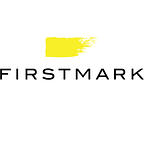By Amish Jani & Leigh Bonner
Equity is one of the most powerful compensation tools available to venture-backed startups. A thoughtfully designed equity program makes a significant impact on a growing company, giving employees a tangible sense of ownership and serving as a long-term retention tool.
Traditional Approach to Refresh Equity Grants
Typically, startups grant employees stock with a one-year cliff (i.e., no equity is vested until an employee reaches her one-year anniversary) and a four-year vesting period. At the one-year cliff, an employee vests 1/4 of her initial grant. Thereafter, equity typically vests monthly or quarterly, with an employee receiving 1/48th (or 1/12th) of her original grant each month.
Several years into a company lifecycle, however, many early employees approach the full vesting of their initial grant. To continue providing equity compensation that motivates and retains employees, most companies implement equity refresh grants at year 3 or 3.5 using their standard, initial option structure. While this is intended to ensure competitive, forward-looking equity compensation, the actual result is a high-value peak period of vesting in year 4 that contrasts sharply with years 5 & 6. This can surprisingly create a further inducement to leave in year 4, given the year’s outsized magnitude of vesting, as illustrated below.
An Alternative Approach: Sequential Equity Refresh Grant
At FirstMark, we have observed companies deploy a variety of approaches across our portfolio. We have generally recommended a practice that we call the Sequential Equity Refresh Grant (or SERG).
A SERG is structured as follows: A refresh grant is issued and communicated once an employee has vested the third full year of her initial grant. The new grant takes the form of a 1+4 grant, meaning there is a 1 year “cliff” (or “option preview”), and then the SERG begins to vest monthly over the ensuing 4 years. In this scenario, the 409a exercise price for the entire grant is locked in at the end of the third year. In practice, if an employee started in January 2018, the SERG would be communicated to that employee in January 2021 (at the lower 409a price) and would begin to vest in January 2022.
The SERG model provides a number of benefits to both employees and employers. First, it allows a company to clearly communicate the intention of offering the employee additional equity well in advance of the full vesting of their initial grant. As discussed above, it also locks in a beneficial 409a pricing for the employee that mitigates any valuation increases that can occur during the third year (perhaps due to a revised 409A valuation, or a financing event). Finally, companies eliminate the “peak” year 4 problem and maintain retentive power for 8 years across the two grants instead of only 7.
Magnitude of SERGs:
In the chart above, you’ll notice that the option grant amounts decrease over time. This is because a Company’s risk profile decreases (early employees take greater risk of success) and valuation is growing (you require fewer shares to convey an appropriate value). As a rule of thumb, SERGs are typically issued at 50–75% of what a new employee’s grant in the same role would receive in year 4. We suggest this number because if your company’s valuation is rapidly expanding, the employee’s initial option grant should have significant retentive power.
A few side notes as you implement the SERG practice:
- When using the 50–75% range as a rule of thumb, remember that this SERG percentage is based on what a new employee’s (in the same role as the existing employee) grant would be in year 4. This is not the same number that you would get by calculating the new grant value as a percentage of the existing employee’s original grant. Make sure that everyone understands the discrepancy and is using the same language.
- The SERG framework is designed to apply to the top 50% of your employees as equity is valuable and should be reserved for impactful employees. Top performers can and should be evaluated in a bespoke manner, and rewarded more handsomely.
- For the remaining “bottom 50%” employees, companies can offer a lower amount of 25–40% to market, or can offer no grant at all, encouraging position recycling and new employee recruitment.
- SERG does not account for promotions or role changes, which would typically lead to an additional grant at time of promotion. The grant would need to index to this new role level.
Like all retentive tools, context is important; SERG is a general best practice to motivate and retain the best employees, but always be mindful when evaluating your own company needs and circumstances.
FirstMark is a venture capital firm that invests in companies at the earliest stages. Based in New York City, we are a small, passionate and dedicated team of professionals committed to growing our community and helping our companies access the information and connections they need to scale. Many of our companies have grown to define their industries, such as Pinterest (social media), Shopify (e-commerce) or Riot Games (games).
